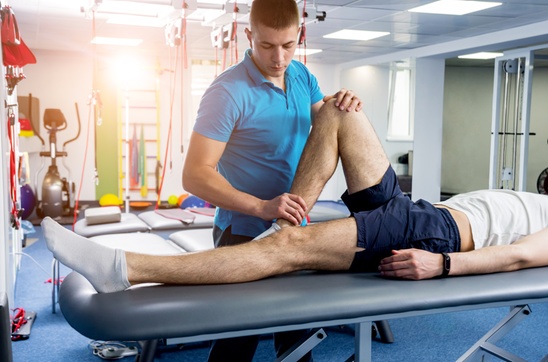Advancements in surgical techniques have significantly improved the outcomes of sports injury surgeries in various ways, enhancing recovery times, reducing complications, and improving overall functionality for athletes.
Here are several key advancements and their impacts:
1. Minimally Invasive Surgery (MIS)
- Reduced Recovery Time: Techniques such as arthroscopy involve smaller incisions and cause less tissue damage compared to traditional open surgeries. This results in quicker recovery times and shorter hospital stays.
- Lower Risk of Complications: Smaller incisions reduce the risk of infections and postoperative complications. Patients experience less postoperative pain and have smaller scars.
- Enhanced Precision: Arthroscopy provides surgeons with a clear view of the joint, allowing for more precise repairs of ligaments, tendons, and cartilage.
2. Advanced Imaging and Navigation Technologies
- Preoperative Planning: Advanced imaging technologies like MRI and CT scans, coupled with 3D modeling, enable detailed preoperative planning. Surgeons can better understand the extent of the injury and plan the surgical approach.
- Intraoperative Guidance: Computer-assisted navigation and robotic surgery systems offer real-time guidance during surgery, increasing the accuracy of procedures such as ligament reconstructions and joint replacements.
3. Biologic Augmentation
- Enhanced Healing: The use of biologics, such as platelet-rich plasma (PRP) and stem cell therapy, promotes faster and more effective healing. These biologics can be used to enhance tissue repair in surgeries involving tendons, ligaments, and cartilage.
- Reduced Recovery Time: Biologic treatments can accelerate recovery times by promoting natural healing processes and reducing inflammation.
4. Improved Surgical Techniques and Materials
- Anatomic Reconstruction: Techniques that aim for anatomic reconstruction of injured structures, such as the anterior cruciate ligament (ACL), ensure that repairs mimic the natural anatomy of the joint, leading to better functional outcomes.
- Advanced Materials: The development of stronger, more flexible sutures and bioresorbable implants improves the durability and integration of repairs. These materials minimize the need for future surgeries to remove hardware.
5. Enhanced Rehabilitation Protocols
- Early Mobilization: Modern surgical techniques often allow for early mobilization post-surgery, which is crucial for maintaining muscle strength and joint flexibility. This leads to a quicker return to normal activities.
- Customized Rehabilitation: Advances in surgical precision enable the design of personalized rehabilitation programs tailored to the specific needs of the injury and the individual patient. This targeted approach enhances recovery.
6. Specific Case Examples
- ACL Reconstruction: Techniques like the use of autografts or allografts and the application of internal bracing have improved the stability and strength of ACL repairs, reducing the risk of re-injury and improving long-term outcomes.
- Rotator Cuff Repair: Advances in arthroscopic rotator cuff repair techniques have led to higher success rates and lower re-tear rates, allowing athletes to regain shoulder strength and mobility more effectively.
- Meniscus Repair: Modern suture techniques and the use of biological augmentation can improve healing rates for meniscal repairs, preserving more of the meniscus and enhancing knee function.
7. Postoperative Monitoring and Telemedicine
- Wearable Technology: Wearable devices that monitor movement, load, and physiological parameters provide valuable data that can be used to optimize rehabilitation protocols and detect issues early.
- Telemedicine: Remote consultations and monitoring enable continuous follow-up care, ensuring patients adhere to rehabilitation protocols and receive timely adjustments to their care plans.
Conclusion
Advancements in surgical techniques have significantly improved the outcomes of sports injury surgeries by making procedures less invasive, more precise, and more effective in promoting faster and more complete recoveries. These improvements have enabled athletes to return to their sports with better functional outcomes and reduced risk of reinjury, ultimately enhancing their overall quality of life and athletic performance.





Comments